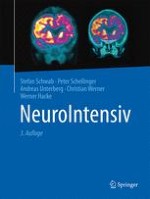Zusammenfassung
Das Bild analgosedierter Patienten auf einer Intensivstation hat sich in den letzten Jahrzehnten grundlegend verändert. Dazu haben neue, besser geeignete Medikamente für die Analgosedierung beigetragen, aber auch eine deutlich differenziertere Beatmungstherapie von kritisch Kranken. Während noch vor wenigen Jahren Patienten auf Intensivstationen im Wesentlichen tief sediert und nicht kooperationsfähig waren, setzt sich zunehmend die Erkenntnis durch, dass der Bewusstseinsgrad eines Patienten nur soweit eingeschränkt sein sollte, wie es im Rahmen des zugrundeliegenden Krankheitsbildes und der entsprechenden Therapie erforderlich ist. Eine regelmäßige Überprüfung der Sedierungstiefe, wie zum Beispiel durch eine tägliche Unterbrechung der Sedierung bis zum Wiederauftreten der Wachheit eines Patienten, kann zu einer signifikanten Reduktion der Beatmungsdauer, aber auch der Aufenthaltsdauer auf der Intensivstation führen.
